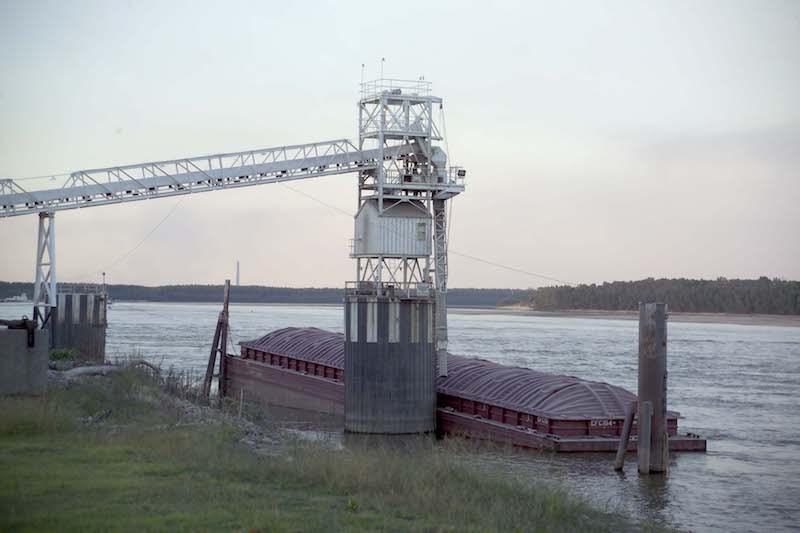Although poor weather and navigation conditions negatively affected overall barge traffic in 2019, the impact has varied by region.
The states where harvest has progressed at or above normal (such as Texas and North Carolina) either do not use the Mississippi River for barge shipments or (like Tennessee, Mississippi, and Louisiana) have access to the waterways below the locking system. This has resulted in a larger share of barges arriving in the Gulf that have not transited the locks. In 2019, 44% of the barges being unloaded in New Orleans from July 28 through Oct. 19 did not come through the locks, compared to 40% during the same period in 2018. The Ohio River and its tributaries run through states such as Pennsylvania, Tennessee, and Kentucky that have experienced rapid harvest progress. Because of this fast progress, the locking portion of the river system has experienced high volumes of grain traffic for the year and high recent soybean shipments.
At the Olmsted Locks and Dam near the Ohio’s confluence with the Mississippi, movements from July 28 through Oct. 19 showed a 24% decrease in overall grain shipments from 2018 to 2019. However, at the same location for the same July-to-October timespan, movements showed nearly a 4% increase in soybean shipments from 2018 to 2019. Some states that access the Ohio River, such as Kentucky and Tennessee, are ahead of their average harvest rates, while other states that also access the river are behind schedule. Those that are behind — such as Illinois, Ohio, and Indiana — produce significantly more grain, corn in particular. For the delayed states, the delays are greater for corn than for soybeans.
Because of slow harvest progress in the North and Midwest, the market for grain shipment by barge has recently been slow, reflected by low barge demand and low rates in the Twin Cities, mid-Mississippi River, and Illinois River. In contrast, rates have recently been higher on the Ohio River and on the “Memphis-to-Cairo” stretch of the Mississippi, a more southern area where Tennessee and Kentucky have river access. However, it is important to note that even in these areas, this year’s rates have still generally fallen behind their five-year averages.
If northern states do not make adequate progress before the upper portions of the Mississippi close due to freezing, barge transportation will become unavailable and grain purveyors who would normally ship grain by barge will be forced either to store until the river reopens or ship via a different mode. A decision to store could create high demand for barge shipping in the spring months when the river has reopened.




